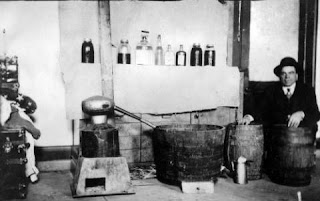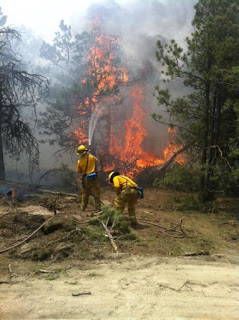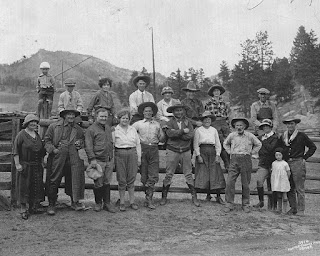Ralph L, Carr cut his teeth in the news game in the rough and tumble streets of turn-of-the-century Cripple Creek. At the same time, he matched wits with friendly competition and rivalry of the caliber of Lowell Thomas. You would think that the publishing business would have been his legacy.
Carr became more famous for his politics.
But it didn’t affect his friendship with world-renowned newsman Lowell Thomas. The two were steadfast buds up until Carr’s Death in 1950. They became pals in their days as rival newspaper editors, covering much of the same news.
Carr edited a rival paper in Cripple Creek, The Times, at the same time Thomas was at the Victor Record and News.
But, between 1939-1943 Colorado had one of the most courageous and independent governors ever to be elected, by many accounts. Ralph Lawrence Carr was born in Rosita, Colorado and educated in the Cripple Creek school system. After receiving his LLB from the University of Colorado, Carr moved to Victor, Trinidad, and then Antonito where he practiced law and became a publisher. Carr served as a county attorney of Conejos County, and then as Colorado Assistant Attorney General. The apex of his legal career occurred when he became a United States District Attorney. As a Republican, Carr lost this influential post when the Democratic "New Dealers" began to dominate national politics. Despite this loss he was able to stay in the public eye by becoming a powerful and prominent water/irrigation lawyer.
In 1939 a struggling Republican Party supported Carr as their gubernatorial candidate, and won. Within the first half-hour of his term, Carr proposed a plan for a balanced budget by transferring state income taxes from public schools to the state's general fund. These immediate fiscal measures helped to save our state from imminent bankruptcy. Also due to Carr's leadership, the Legislature passed the State Reorganization Act, which greatly increased the efficiency of state government. As a result, Carr is one of the few governors known for making the Colorado bureaucracy more operative.
While Carr's policies were aimed at dismantling the expensive bureaucracy of the New Deal, Carr still supported Roosevelt's foreign policy and favored American entrance into World War II after the Japanese bombed Pearl Harbor on December 7, 1941. The war with Japan initiated a chain of events that bred discrimination and intolerance toward Japanese-Americans. In 1942 an estimated 120,000 Japanese-Americans were stripped of their property and possessions. These displaced citizens were resettled in land-locked states by the War Relocation Authority so that the supposed "yellow peril" could be contained. The question on many Coloradoans' minds was not whether American citizens of Japanese decent should be stripped of their rights and put in internment camps, but where the camps should be. The overwhelming opinion of the populace was typified by a series of highway billboards proclaiming, "Japs keep going."
In other states, the Governors took aggressive stances against allowing relocation camps in their States.
The Governor of Wyoming went as far as saying:
“There will be Japs hanging from every pine tree.” If the Federal Government tried to relocate West Coast Japanese Americans there.
One of the few voices of reason during wartime was Governor Carr, who continued to treat the Japanese-Americans with respect and sought to help them keep their American citizenship. He sacrificed his political career to bravely confront the often-dark side of human nature.
At one time, the New York Times consider him as being on the path to become president of the United States.
"If you harm them, you must harm me. I was brought up in a small town where I knew the shame and dishonor of race hatred. I grew to despise it because it threatened the happiness of you and you and you." Carr's selfless devotion to all Americans, while destroying his hopes for a senate seat, did in the end become extolled as, "a small voice but a strong voice."
A recent book: The principled Politician: The Ralph Carr Story by 9News reporter Adam Schrager, has brought new attention to the forgotten hero and as recently as 2008, they renamed U.S Hwy 285 from Denver to the New Mexico state line the “Ralph Carr Memorial Highway.”
That reminds me of a story
“All I know is what I read in the papers.”
__ Will Rogers
“Good evening everybody.!”
That is how a favorite Colorado Newspaper character opened his trademark reports for decades.
Lowell
Thomas, former editor of the Victor Daily Record and Victor News, died
of a heart attack in 1981, two weeks after last visiting his boyhood
hometown in the small Colorado mining hamlet of Victor.
Both of those
Victor newspapers eventually merged into the Cripple Creek Gold Rush, a
1,000-circulation, paid weekly that I once published.
After viewing
one of Thomas lectures, or Television or radio reports, listeners often
experienced a sense, or distinct feeling, that they were listening to a
very eloquent friend, telling stories that actually happened to the
storyteller personally.
He would often break into a yarn in some
fascinating exotic location as if was telling about something that
happened to him that morning, and maybe it did.
“That reminds me of a story,” he would say.
Thomas was the Forest Gump of the 20th Century. The man was everywhere.
In
1900, when Teddy Roosevelt was campaigning in Victor for William
McKinley, who was not very popular in a state that supported the free
coinage of silver and William Jennings Bryan.
When Roosevelt appeared
in Victor, the crowd was polite for a while, but the future president
was forced to cut his speech short as catcalls and taunts from
“democratic hoodlums” escalated into almost a full-scale riot at Midland
Terminal.
Roosevelt, his pince-nez knocked from his face, was blinded to the onslaught.
One of the “democratic hoodlums” picked up a wooden two by four and swung at Roosevelt’s head.
“That is where I first advise a president,” said Thomas on several occasions. “I pulled on his coattail and told him to duck.”
Actually,
a guy by the name of Danny Sullivan, blocked the two by four’s arc from
cracking the future president’s head. He reportedly received a red
sapphire ring as a token of Roosevelt’s appreciation on the train ride
out of the mining district.
Back to Thomas, however.
Born in
Woodington, Ohio, in 1892, Thomas moved to Victor at the age of eight
and as a boy of 10, joined the newsboy union. He first folded and
delivered the Victor Daily Record but later began hawking The Denver
Post in the gambling halls, red light districts and saloons of Victor
and Cripple Creek.
He also worked as a gold miner, range-rider,
waiter, short-order cook, milker and pitched hay on the Ute Mountain
Indian reservation to help finance his education.
In 1911, at age 19,
he became the editor of the Record. In 1912, he moved over to the
Victor News, but left shortly afterward to become a reporter at the
Chicago Journal, where he worked until 1914. During his stint at the
Journal, Thomas attended law school, where he also taught oratory.
“The
ability to speak is a short-cut to distinction. In puts a man in the
limelight, raises him head and shoulders above the crowd,” Thomas is
frequently quoted as saying.
According to the Horatio Alger
Association of Distinguished Americans (HAADA), Thomas earned four
college degrees, one each at Valparaiso University, University of
Denver, Kent College of Law and Princeton University.
He also
received 25 honorary degrees from other institutions. In addition to
HAADA, Thomas’ achievements landed him in such varied institutions as
the Radio Hall of Fame, Colorado Ski Hall of Fame and the National
Aviation Hall of Fame.
President Ford awarded him the Medal of Freedom in 1976.
As
pioneer of radio journalism, newsreel services and then television
news, Thomas established himself as the voice of world travel and
adventure in his long and prolific career. He wrote 52 books, many of
them best sellers, was the first reporter to enter Germany following
World War I, broadcast news during World War II from a mobile truck
behind the front lines and flew over Berlin in a P-51 Mustang during the
final battle between Russians and Germans.
President Woodrow Wilson commissioned Thomas to create a historical record of World War I battles.
His
experiences in Arabia with T.E. Lawrence during that commission were
the basis of a series of films, lectures and his book, “With Lawrence in
Arabia.”
He wasn’t a fan of the film, however. “They only got two things right, the camels and the sand,” Thomas said.
Other
journalistic firsts for Thomas include the narration, in 1925, of the
first aerial circumnavigation of the globe; and his 17-year career at
Fox Movietone News, heard weekly by nearly 100 million people.
Want
more? He also helped pioneer the development of Cinerama, a film
technology, participated in the first flight across Antarctica and
hosted the PBS television series, “Lowell Thomas Remembers.”
He
crammed a lot of things to remember during his 89 years on Earth. “After
the age of 80, everything reminds you of something else,” Thomas said.
His
son, Lowell Thomas Jr., who once served as the lieutenant governor of
Alaska, produced the television series “High Adventure,” a weekly series
in which Thomas appeared. The two also co-authored “Famous First
Flights That Changed History.”
Of his travels and adventures, Thomas said his personal quest was “to know more about this globe than anyone else ever has.”
To
learn more about Thomas’ life and achievements, I recommend you travel
to Victor and visit the Victor Lowell Thomas Museum at the corner of
Third Street and Victor Avenue.
The museum is currently raising funds
to save the Reynolds Block, where the Museum has been housed since
1960. The Victor Improvement Association which owns the museum
collection and the building, recently was awarded a $208,177 grant from
the State Historical Fund.
###






















